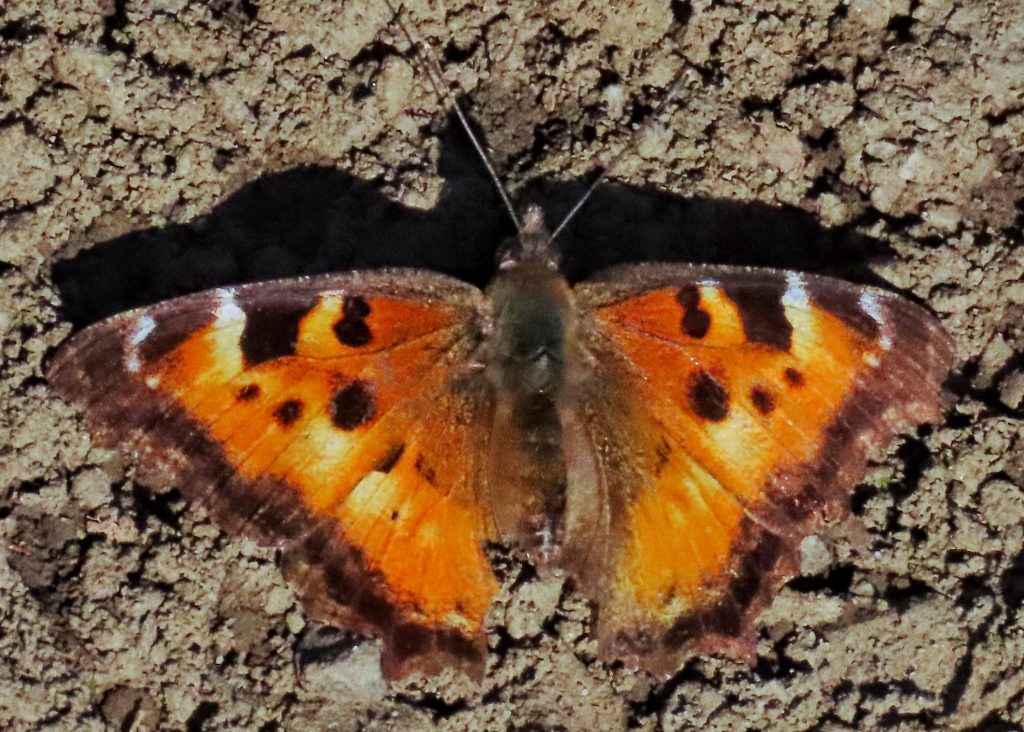
It is always one of the great joys of springtime to see the first California Tortoiseshells. I often begin hearing reports of them as early as January, when a few brave butterflies may temporarily venture out of hibernation on warmish days to get a ‘situation report’, but I’ve never seen one earlier than mid February.
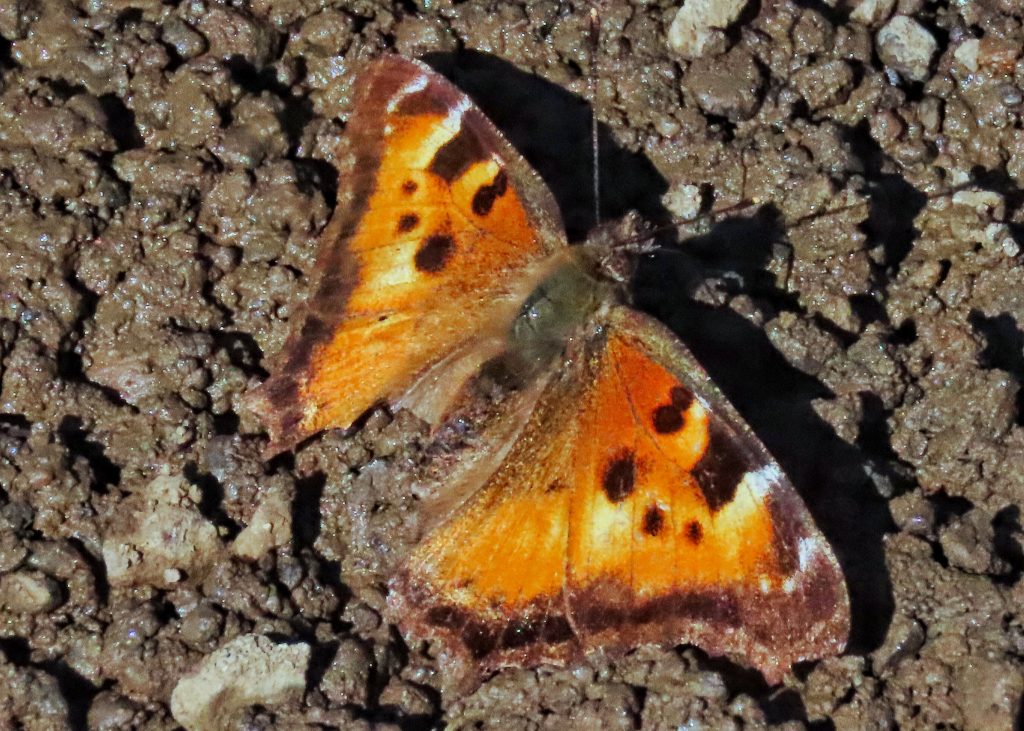
This is a migratory species, which travels far and fast. As soon as the pupae have eclosed they begin traveling, usually north or east, and upslope, always in search of Ceanothus spp. on which to lay eggs (oviposit). It is unclear how far an individual Cal Tort may migrate, but by virtue of multiple broods the migration stretches from Baja California to s BC. In the fall some of these northern butterflies, by unknown mechanisms, choose to overwinter there, while most of that generation migrate southward and winter in hibernation in California, before starting the cycle again the following spring.
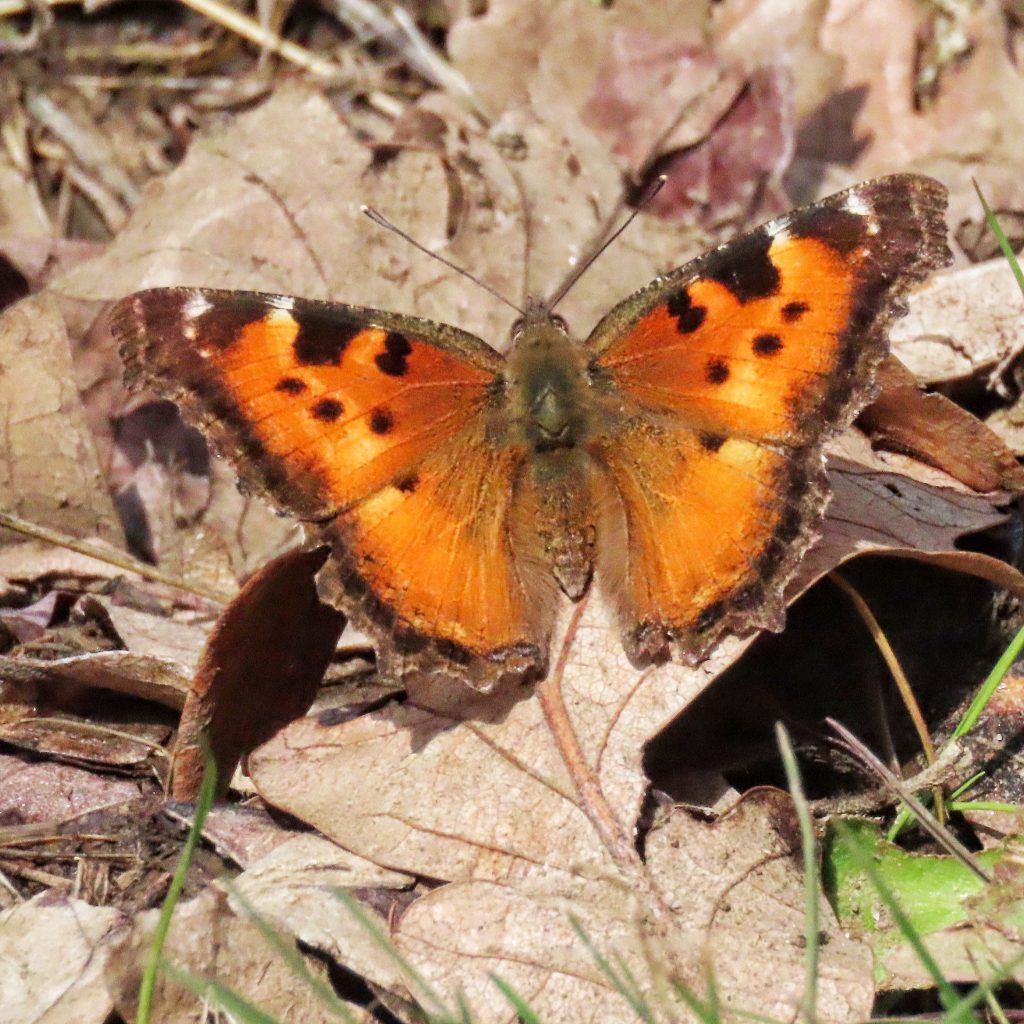
It is also, along with Painted Ladies (Vanessa cardui) our most common irruptor. Clouds of Nymphalis californica have shut down freeways! These irruption events come because of population explosions, usually due to multiple years of ideal weather conditions and abundant food supplies. Sometimes irruptions will happen in consecutive years, or even multiple years in a row. But inevitably, when they have ravaged their food supply throughout the region, their numbers plummet.
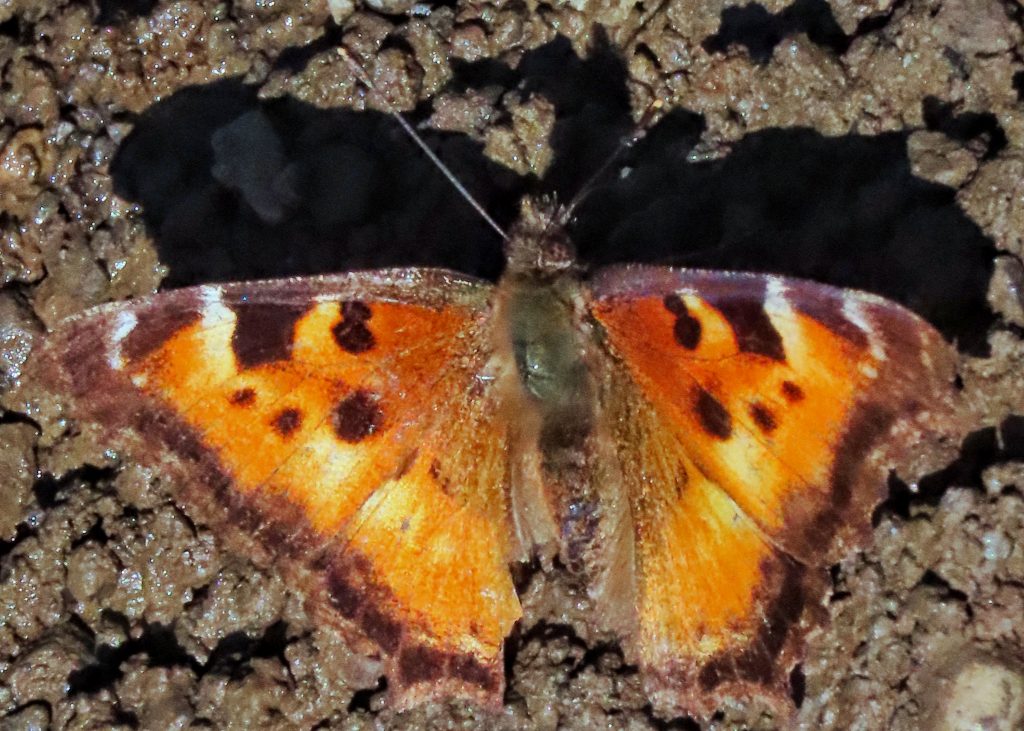
Another reason for occasional steep declines in their population is that sometimes the migration starts too early, and they are forced to oviposit on the limited number of larval hosts which have melted out from the snow. This leads to drastic overpopulation of caterpillars on those plants, and many die of starvation, when only a short way upslope there are plants that have no caterpillars at all. This is probably a boon to that region’s Ceanothus, since they can flower and set seed for future generations undisturbed by the little eating machines.
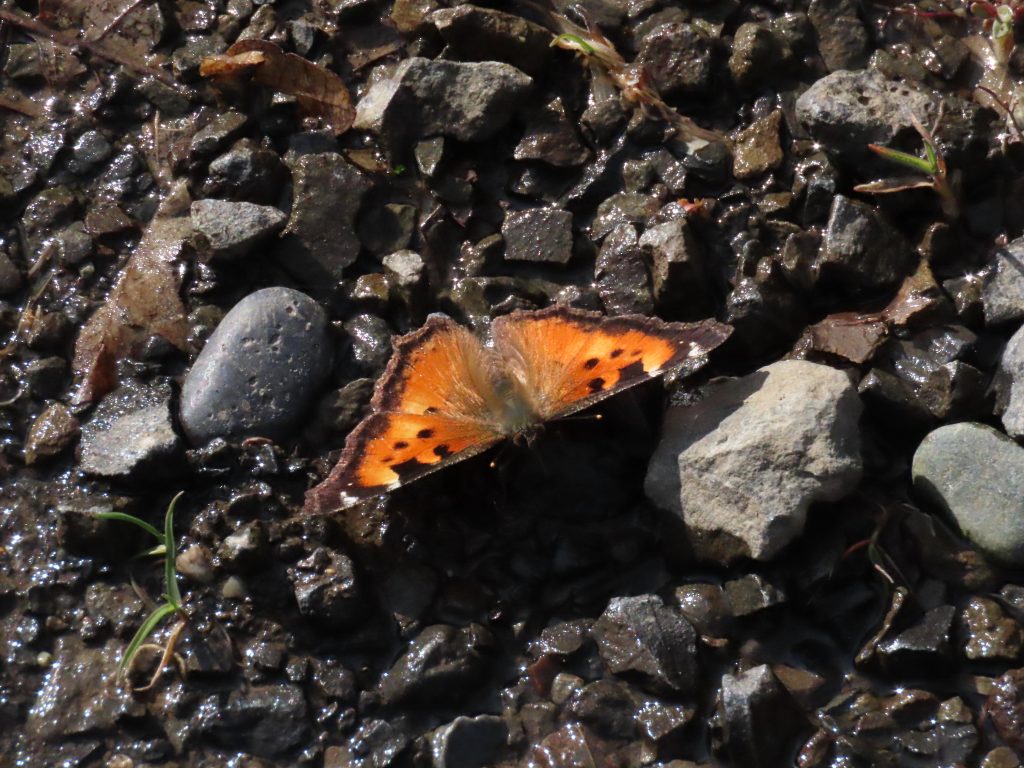
Despite the ‘boom and bust’ cycles, and probably at least partly due to the hardiness of the Ceanothus, which survives and even thrives regardless of its periodic and extensive defoliation, Nymphalis californica is doing very well in this modern world, and we can look forward to being graced by its presence in our outdoor adventures for years to come!
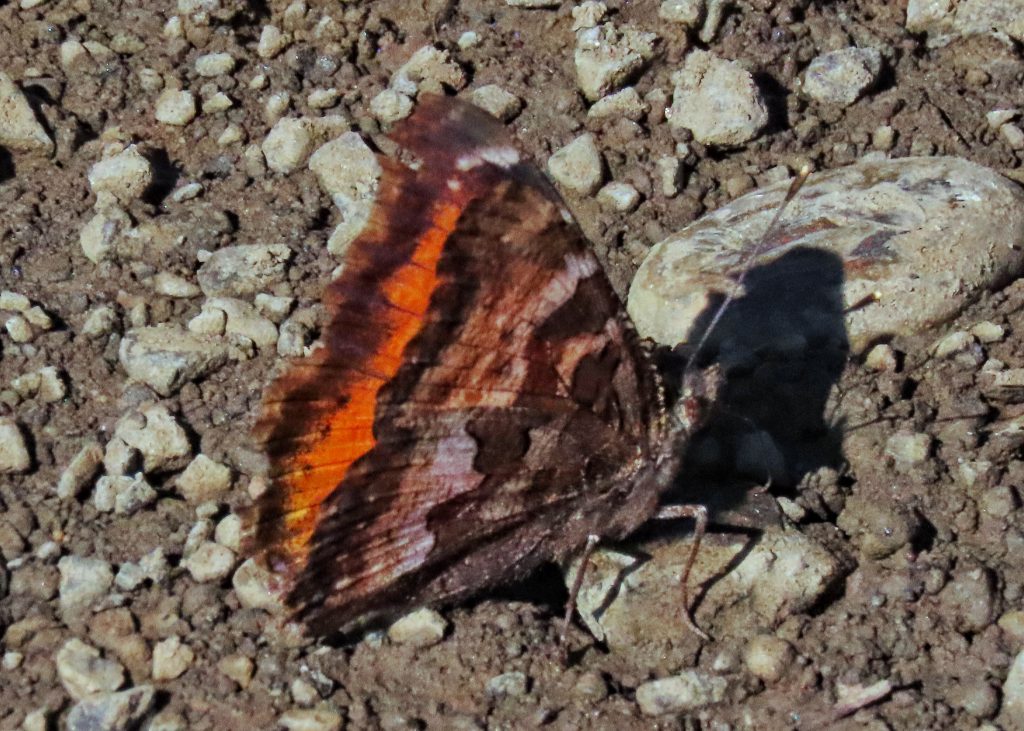
Description– Fairly large (wingspan up to 2.5”) brownish orange and black butterfly, with 1-3 white bars separating patches of black on the leading edge of the dorsal forewing, with black spots amid the orange and a wide, dark, brownish black border along the margin of all wings; ventral wings are mottled brown, grey, and black to provide camouflage against bark and soil; wing margins irregularly lobed and scalloped.
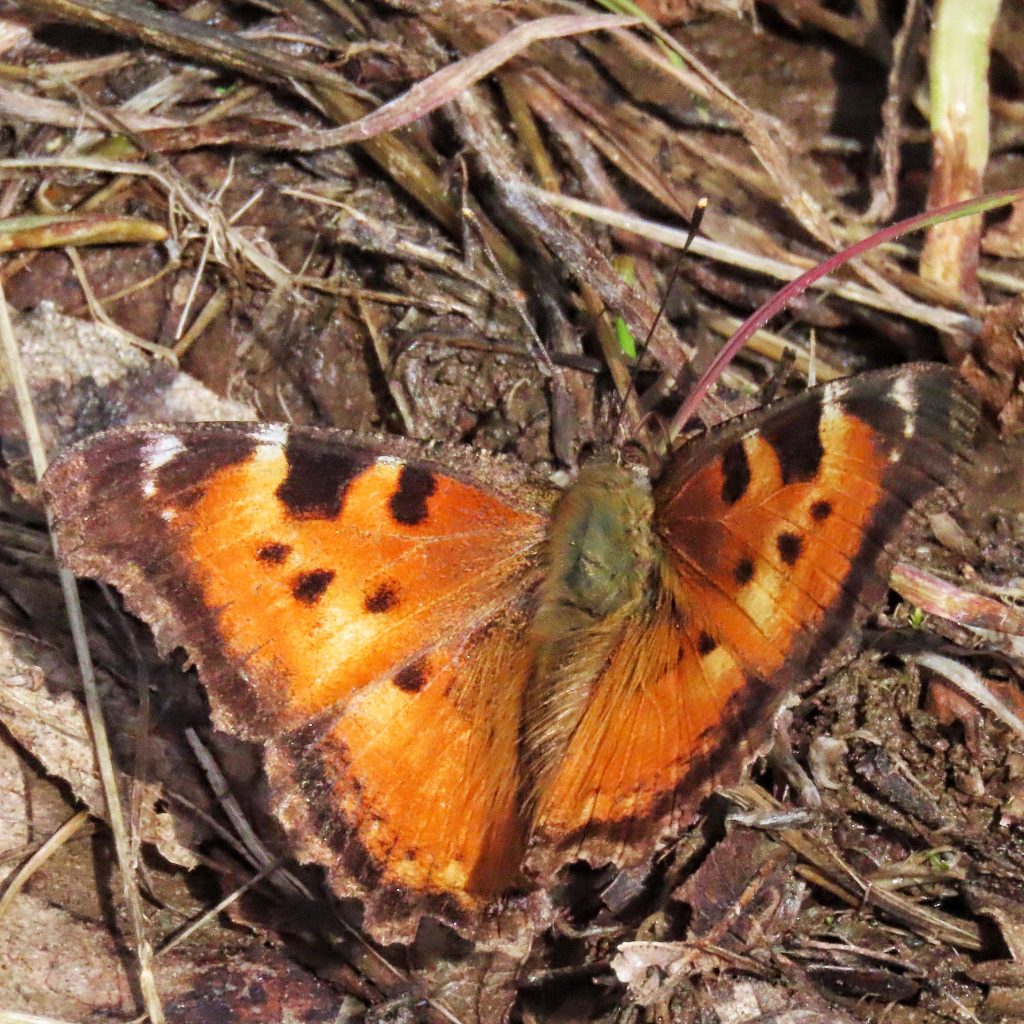
Similar species– There are many species of orange and black butterflies, and attention to the extent of those colors, presence/absence/extent of white bars/dots, and the shape of the wings and wing margins, is crucial to accurate identification; N. l-album (Compton Tortoiseshell) has a white bar on dorsal hindwing, lacking in N. californica, and orange, rather than black, on the margin of the dorsal hindwing; Aglais milberti (Milbert’s Tortoiseshell) has extensive black near the wing bases; Polygonia spp. lack white on dorsal forewing, and have a concave trailing edge on the forewing; Vanessa spp. have smoother forewing margins and more white dots/bars near the wingtips.
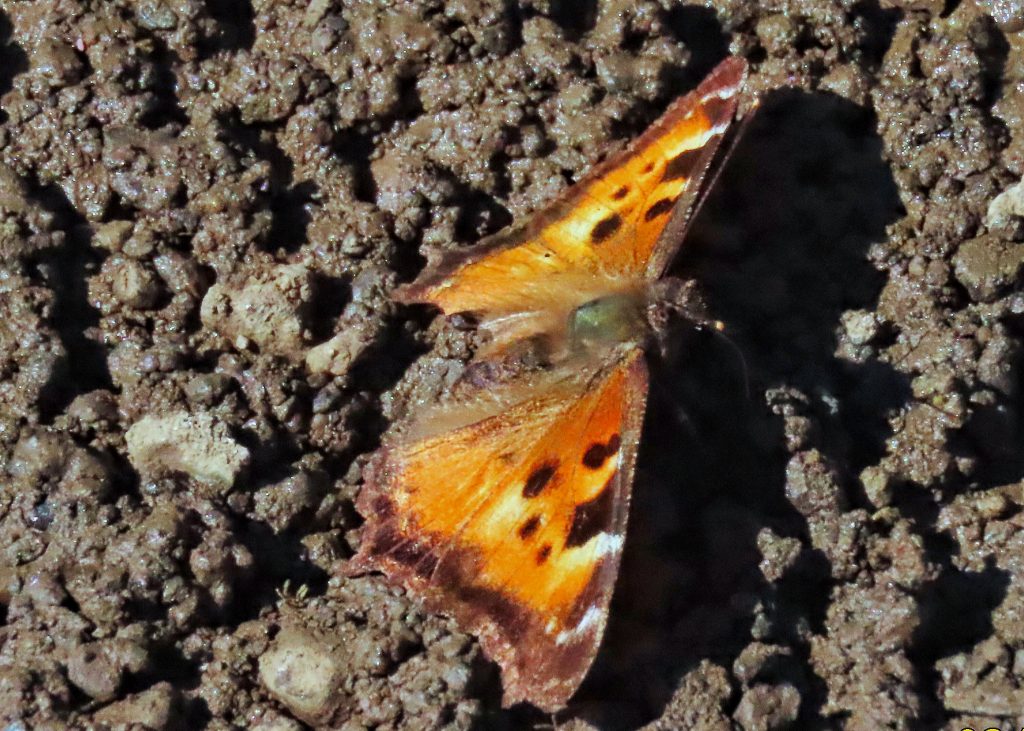
Habitat– Can be found anywhere during migration, but is most regularly found where there are abundant Ceanothus spp., which is mostly in forest openings and open woods at all elevations.
Range-Temperate western North America; region wide during migration, most common in montane habitats of Ceanothus.
Eats– Larvae feed only on the leaves of various Ceanothus spp., including cultivars, but C. velutinus (snow brush), C. integerrimus (deerbrush), and C. sanguineus (red-stem ceanothus) are by far the most common larval hosts in our region; adults puddle, and feed on fir needle exudate, fir sap, fruits, and nectar at various flowers, including Ceanothus spp.
Eaten by– Insectivores of all orders.
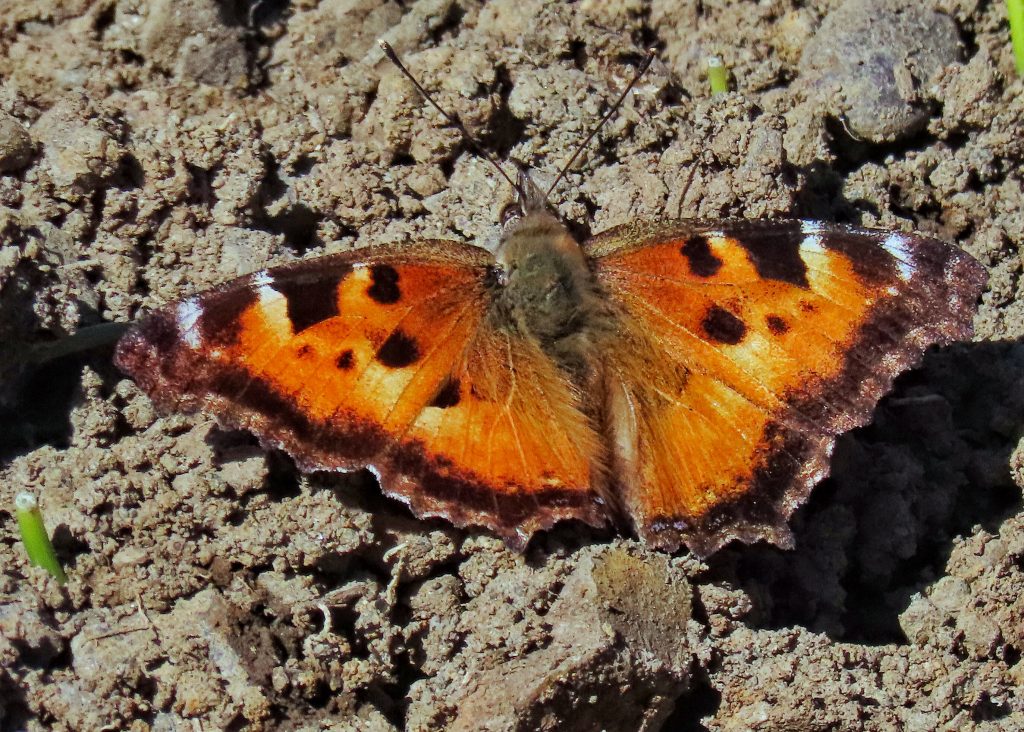
Reproduction-Breeding takes place in the spring; when conditions are right (early occurring spring and abundant food) they may have two broods, but are usually univoltine in our region; eggs are laid in clusters on the underside of leaves of Ceanothus spp.; in good conditions they may go from egg to eclosure in 5 weeks; overwinter as adults.
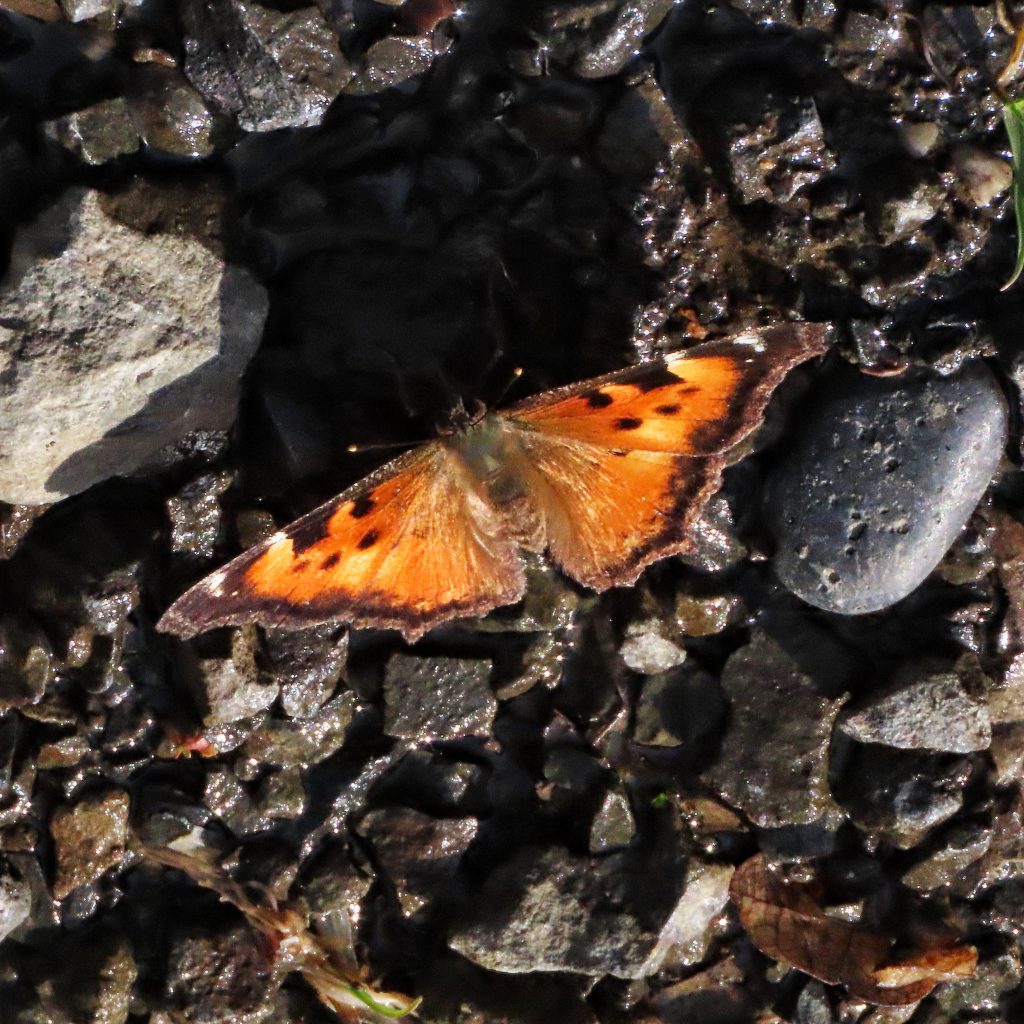
Adults active-It is theoretically possible to see California Tortoiseshells on any day of the year; they do hibernate in winter, but sometimes emerge briefly on warm days, and sometimes they estivate in the heat of summer, but there are usually still many about; peak times in our region are April and August.
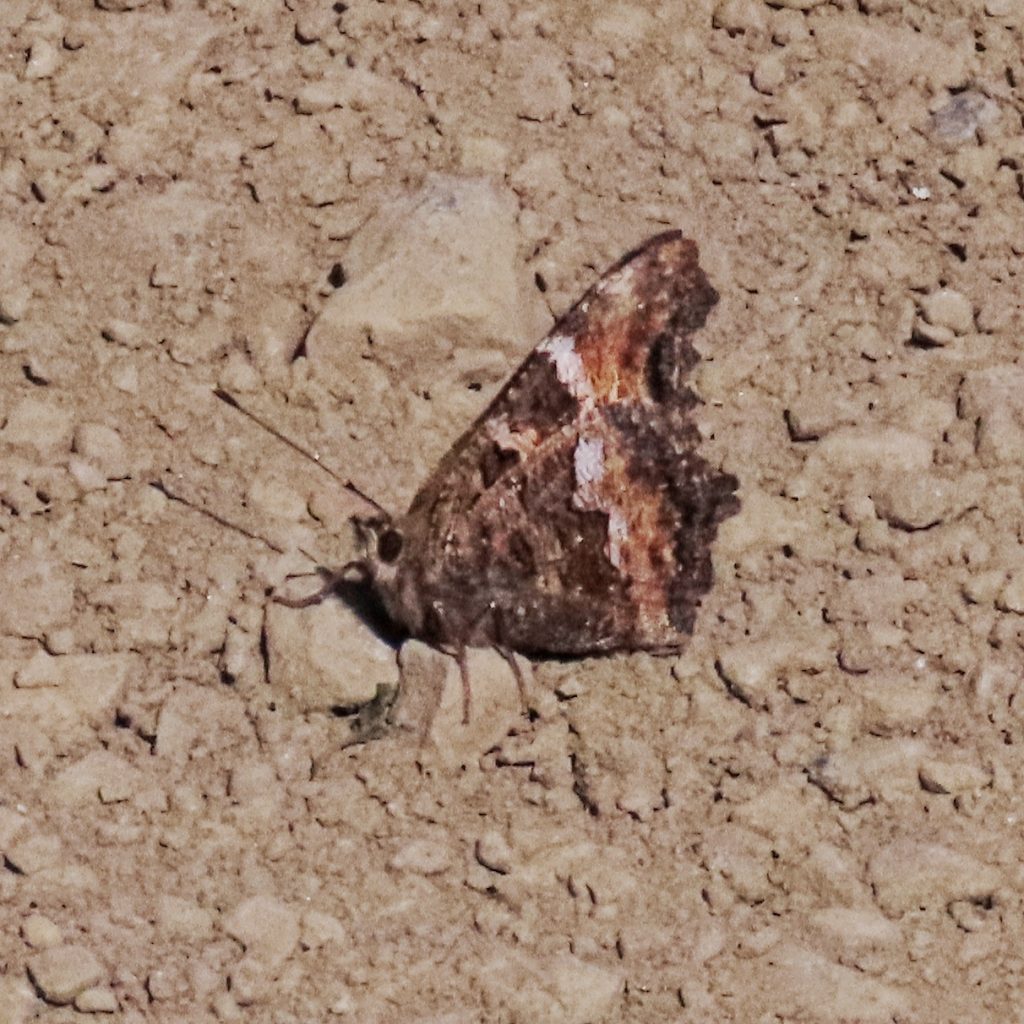
Etymology of names– Nymphalis is from Greek mythology, and is the type genus for the family Nymphalidae. Nymphs were minor deities of springs, forests, and mountains, the implication being that you will find these butterflies in those locales, although they are actually found in many other habitats as well. The specific epithet californica refers to where the type species was found.
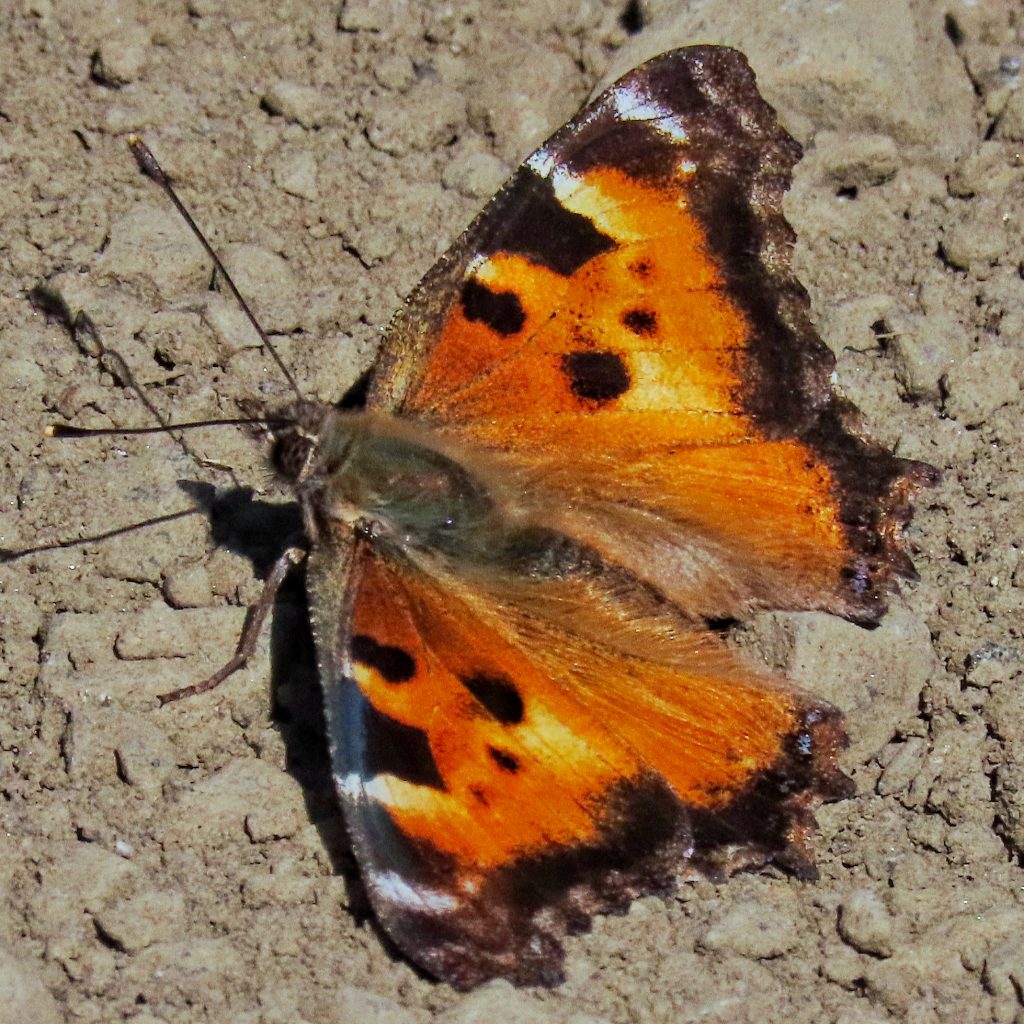
https://www.butterfliesandmoths.org/species/Nymphalis-californica
https://butterfly.ucdavis.edu/butterfly/nymphalis/californica
http://fieldguide.mt.gov/speciesDetail.aspx?elcode=IILEPK6020
https://www.nps.gov/articles/000/california-tortoiseshell.htm
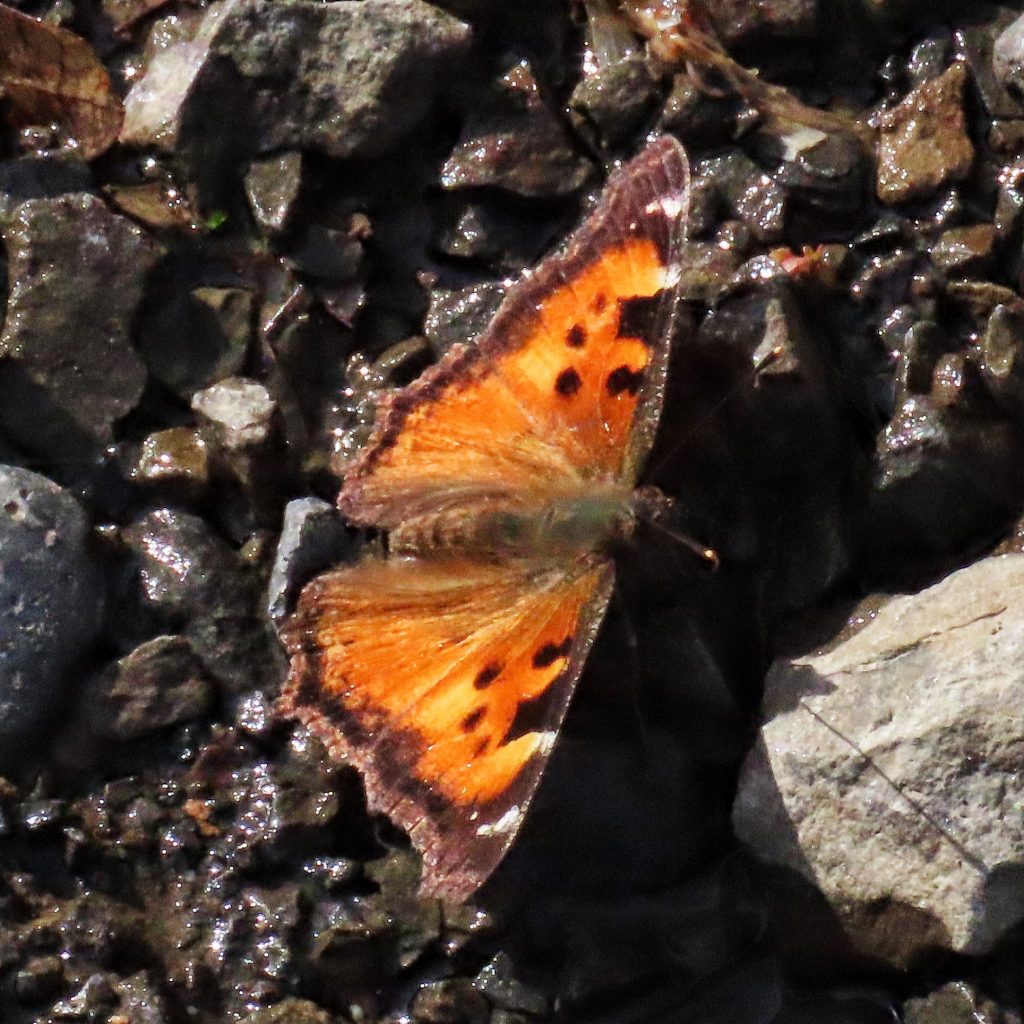
Twice we have driven through swarms of these (once in Bend and once in the Palm Springs area) and I just hate killing them. But they seem to survive well in general.
I’ve never seen an actual swarm, but a few times I’ve seen dozens and dozens of them. Glad I’ve never had to drive through a cloud of them!
There weren’t enough either time to halt traffic, but enough that we could not avoid hitting a number of them.
Yikes! That would be unpleasant!